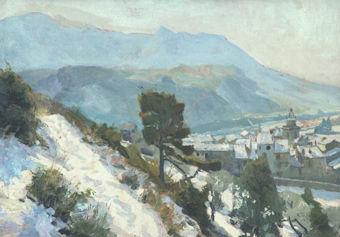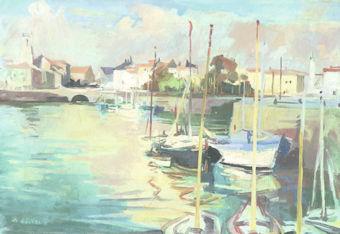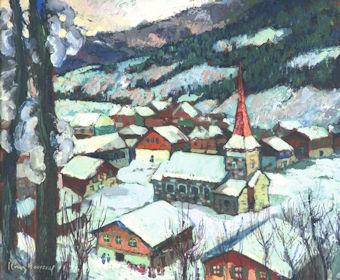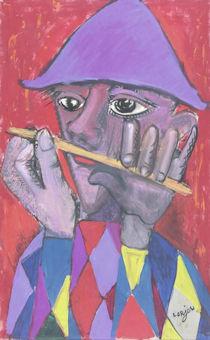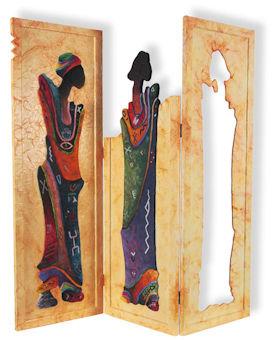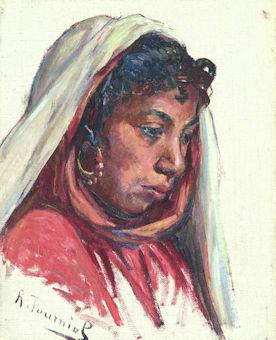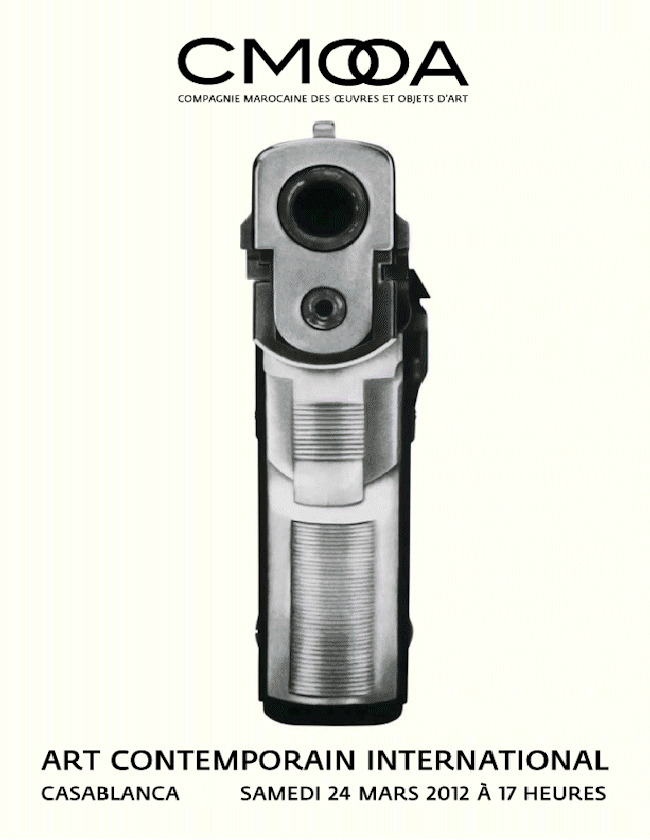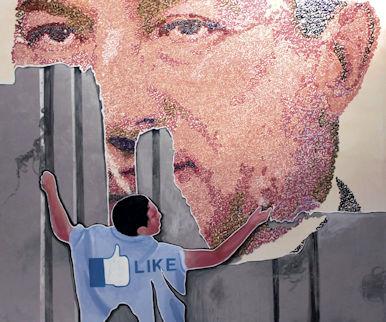Acrylique sur toile
200 x 240 cm
La révolution du jasmin a créé une nouvelle ferveur chez les artistes, qui rivalisent de créativité pour dénoncer les atrocités commises par les dictateurs dans les pays arabes. Dans «bye bye Hosni», Zakaria Ramhani met en scène un manifestant arrachant une affiche de Hosni Moubarak, avec sur son dos l’image du bouton « like » de Facebook. Zakaria Ramhani explore ici le rapport entre les médias et la révolution égyptienne, notamment le rôle joué par les réseaux sociaux dans la diffusion des images de la révolution à la planète entière. Encouragés par les images véhiculées par Facebook montrant les foules de manifestants sur la Place Tahrir, des milliers de personnes sont venues gonfler les rangs des manifestants. Hosni Moubarak se verra très vite contraint d’abandonner le pouvoir. Si Facebook et Twitter n’ont pas été à l’origine des révolutions, il est indéniable qu’ils ont servi de catalyseurs à la révolution égyptienne, montrant l’ampleur du succès et du pouvoir des réseaux sociaux dans le monde actuel, notamment parmi les jeunes. Un pouvoir qui est accentué par la rapidité de la diffusion et de la circulation de l’information et l’incapacité totale de la contrôler. L’artiste a souhaité figer ce moment en associant les différentes parties intervenantes afin de questionner une fois de plus nos sociétés sur leurs fondements.
Cette oeuvre fut d’ailleurs saluée lors de la foire Art Dubaï 2011, considérée comme l’une des plus marquantes de cette édition.
The jasmine revolution has created a new fervor among artists, who vie in creativity with each other to denounce the atrocities committed by the dictators in the Arab countries. In “Bye bye Hosni”, Zakaria Ramhani stages a protestor tearing down a poster featuring Hosni Mubarak, with on his back the image of the Facebook “like” button. Zakaria Ramhani explores here the relationship between the media and the Egyptian revolution, especially the role played by social networks in the diffusion of images of the revolution to the whole planet. Encouraged by the images conveyed by Facebook, showing crowds of demonstrators in Tahrir Square, thousands of people swelled the ranks of demonstrators. Hosni Mubarak was soon forced to give up the power under the people’s pressure. Though Facebook and Twitter did not initiate the Egypt’s revolt, it is undeniable that they were used as catalysts for the Egyptian revolution, showing the extent of the success and power of social networks in today’s world, in particular among young people. Such a power is emphasized by the quick diffusion and circulation of information and the total inability to control it. Thus the artist pays tribute to the Egyptian people who decided overnight to take their destiny into their hands. This work in phase with current events gives young artist Zakaria Ramhani the opportunity “to confront, question and renew the painting and its place within the context of international contemporary art”, he explains. The artist wished to fix this moment in time by associating the various parties involved in order to re-examine our societies and how they function.
This work was in fact greatly admired during Art Dubaï 2011, and was considered one of the most significant pieces of the edition.

